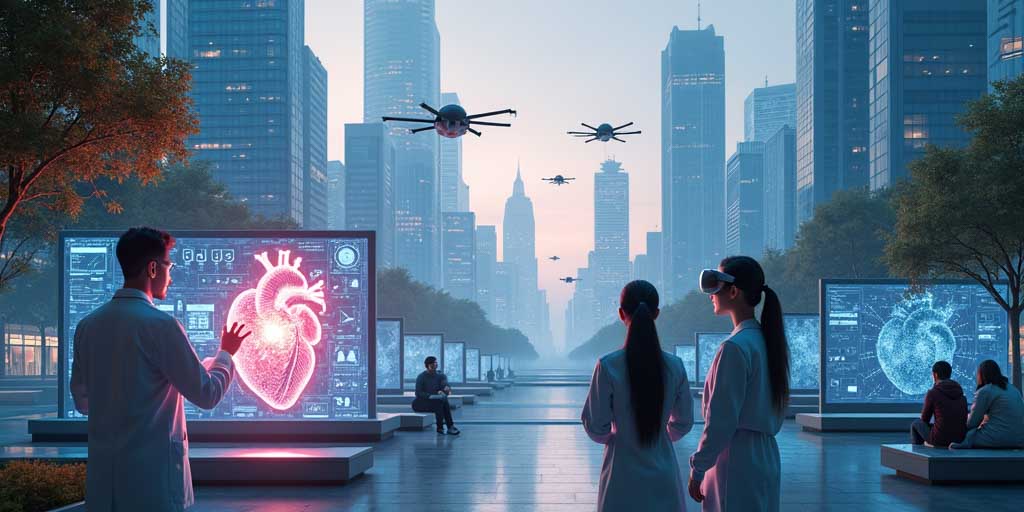Top Healthcare Innovations of 2025: A New Era for Patient Care
The healthcare industry has been witnessing a transformative wave of innovation, especially in the year 2025. These innovations are not just technological advancements but are significantly reshaping patient care, making it more personalized, efficient, and accessible. This article explores the top healthcare innovations of 2025, highlighting how each technology is ushering us into a new era of medical treatment and patient management.
1. AI-Driven Predictive Analytics
One of the standout innovations of 2025 is the integration of Artificial Intelligence (AI) in predictive analytics. AI systems are now capable of analyzing vast amounts of patient data, including medical history, genetic information, and lifestyle choices, to predict health risks and outcomes with remarkable accuracy. This technology enables earlier interventions for conditions like heart disease, stroke, and diabetes, potentially saving millions of lives each year.
Example: HeartVista, a company specializing in AI, has developed a software that uses machine learning to predict cardiac events based on subtle variations in a patient’s ECG readings, which often go unnoticed by human eyes.
2. Telemedicine 2.0
Telemedicine has evolved significantly by 2025. With the advent of 5G technology, virtual consultations are not only about video calls anymore. The new telemedicine platforms support real-time data sharing and analysis, allowing doctors to monitor vital signs, conduct remote diagnostics, and even guide patients through self-administered procedures.
Example: MediLink’s new app integrates with wearable devices to provide continuous health monitoring and instant feedback. This app enables doctors to assess patient health in real-time and intervene promptly when anomalies are detected.
3. Personalized Medicine and Genomics
The field of genomics has made significant strides by 2025, leading to more personalized medicine approaches. Treatments and medications are now tailored based on individual genetic profiles, significantly increasing their efficacy. This innovation not only enhances patient care but also minimizes side effects by avoiding one-size-fits-all treatments.
Example: GenoCure has revolutionized cancer treatment with its gene-editing tool that customizes therapies according to the genetic mutations found in each cancer patient’s tumor, improving survival rates dramatically.
4. Robotic Surgery and Automation
Robotic surgery has become more sophisticated in 2025 with enhanced precision and flexibility, which traditional surgical techniques cannot match. These robotic systems are equipped with AI, allowing them to learn from each procedure and improve over time, thereby reducing surgery time and enhancing recovery rates.
Example: AutoSurge, a leader in surgical robotics, has introduced a new robotic system that performs minimally invasive heart surgeries with little to no human assistance, reducing the risk of complications and the time spent in the operating room.
5. Wearable Health Tech
Wearable technology in 2025 goes beyond fitness trackers and smartwatches. The latest devices can monitor a range of health indicators such as blood pressure, blood sugar levels, neurological activity, and more. This constant monitoring helps in early detection and management of diseases, fundamentally changing how we approach chronic disease management.
Example: HealthBand, the latest in wearable tech, not only tracks your physical activity but also monitors glucose levels and administers insulin as needed, making diabetes management easier and more effective.
6. Virtual Reality (VR) in Therapy
Virtual Reality has found a significant place in therapeutic practices by 2025. VR is being used for pain management, where it helps distract patients during painful procedures or therapy sessions. It is also employed in mental health to treat conditions like PTSD, anxiety, and phobias by exposing patients to their triggers in a controlled environment.
Example: TheraMind VR offers immersive VR experiences that help patients overcome anxiety disorders by gradually exposing them to their fears while teaching coping mechanisms in a safe, controlled setting.
7. Blockchain for Health Data Security
With the increase in data breaches, blockchain technology has become pivotal in healthcare by 2025. It enhances the security and privacy of patient data by decentralizing the storage system, making it nearly impossible for hackers to gain unauthorized access.
Example: HealthChain, a new blockchain platform, allows patients to control who can view their medical records, ensuring their data is secure and only accessible to authorized personnel.
Conclusion
The year 2025 marks a significant milestone in healthcare innovation. The technologies discussed not only enhance patient care but also streamline operations, improve treatment outcomes, and protect patient data. As we continue to embrace these advancements, the future of healthcare looks promising, with a shift towards more personalized, efficient, and secure patient care. The innovations of 2025 are truly setting the stage for a revolutionary era in the medical field.
